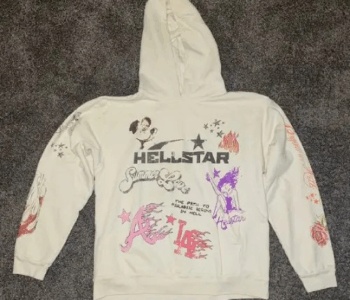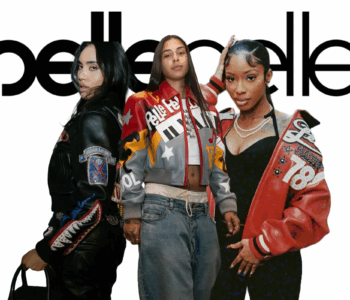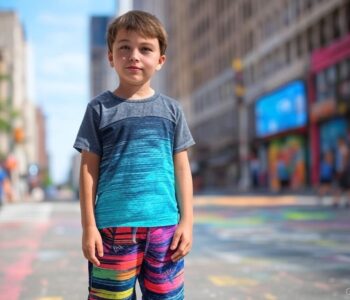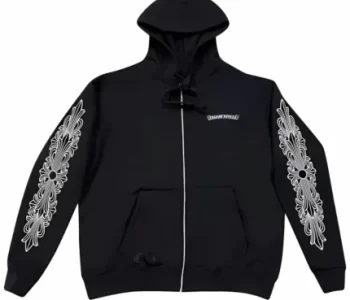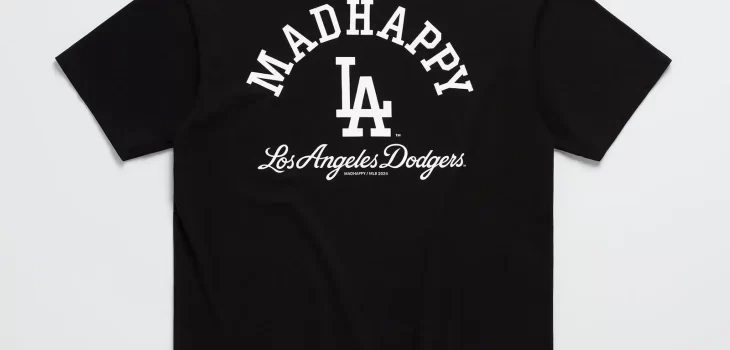 Fashion
Fashion
Mad Happy: More Than a Streetwear Brand, A Movement…
The Genesis of Mad Happy: Clothing With a Conscious Core
Mad Happy was born from more than just a desire to create stylish clothes—it emerged from a collective yearning to connect with others on a deeper emotional level. Founded in 2017 by friends Peiman Raf and Noah Raf, alongside Mason Spector and Josh Sitt, the brand quickly caught the attention of both fashion insiders and mental health advocates alike. Their mission was to cultivate optimism and encourage openness, all while designing garments that fit seamlessly into the wardrobe of the modern streetwear enthusiast.
From the outset, Mad Happy differentiated itself by aligning fashion with feeling. Instead of simply focusing on trends, they turned their attention toward emotions—more specifically, mental health. Their tagline, “Local Optimist,” became a declaration, proudly displayed on hoodies and hats, and eventually on billboards in major cities. It was more than just branding; it was a signal to those who needed to feel seen, understood, and supported.
Aesthetic Identity: Elevated Simplicity Meets Emotional Messaging
Mad Happy’s visual aesthetic is minimalist but deeply intentional. Their collections often utilize soft pastels and primary colors, evoking a sense of comfort and calm. Instead of bold, overpowering graphics, their garments usually feature small, thoughtful phrases—words that spark reflection or provoke conversation.
Each piece is meticulously crafted, with an emphasis on premium materials and fit. Whether it’s a heavyweight cotton hoodie, fleece sweatpants, or a soft-knit beanie, the quality of construction speaks volumes. But what truly sets Mad Happy apart is how they’ve managed to make vulnerability fashionable. Wearing Mad Happy isn’t just a style choice—it’s a statement of values. It’s for the individual who wants to look good and feel good, inside and out.
Mental Health Advocacy: The Heart of the Brand
What truly cements Mad Happy’s unique place in streetwear culture is its commitment to mental health. While many brands dip into activism as a trend, Mad Happy builds it into their very foundation. Their blog and newsletter routinely explore topics like anxiety, depression, mindfulness, and therapy. Their social media platforms are equally transparent, offering not just product shots, but also messages of support and mental wellness resources.
In 2020, Mad Happy took a significant step forward by launching The Mad Happy Foundation, a non-profit arm dedicated to mental health initiatives. The foundation partners with leading mental health organizations, funding research, education, and access to care. A percentage of every sale goes directly to support these causes, which means every hoodie or cap sold helps make an actual difference.
Moreover, Mad Happy has collaborated with therapists and mental health professionals to develop campaigns and events that go beyond fashion. From guided meditations to public conversations on mental wellness, their influence extends into real-life healing spaces—an ambitious and much-needed endeavor in an industry often plagued by superficiality.
Collaborations That Go Beyond Fashion
Madhappy Hoodie collaborations are another cornerstone of their innovative approach. Instead of simply chasing hype, they pursue partnerships that amplify their message. A standout example is their collaboration with Columbia Sportswear, which fused Mad Happy’s mental health advocacy with Columbia’s technical expertise. The resulting collection was not only visually striking but also practical—designed to encourage time spent in nature, known to benefit mental health.
Another notable collaboration was with Lululemon, a fitness apparel brand with a parallel emphasis on well-being. This collection focused on mindfulness in movement, offering activewear designed to enhance not only physical performance but also mental focus.
These collaborations aren’t just limited to clothing brands. Mad Happy has worked with mental health organizations, tech companies, and artists—anyone whose values align with theirs. The goal isn’t just to expand reach but to build a multidimensional community of shared intent.
Retail as Experience: The Mad Happy Pop-Up Phenomenon
Mad Happy has redefined what a shopping experience can look like. Their pop-up stores aren’t just retail spaces; they are immersive environments designed to evoke emotion and foster connection. Often outfitted with calming color palettes, comfortable seating areas, and mental health resource centers, these spaces blur the line between store and sanctuary.
For example, one pop-up in Los Angeles featured a room entirely dedicated to journaling. Another in New York City offered workshops and talks hosted by mental health professionals. By turning retail spaces into community hubs, Mad Happy offers more than just merchandise—they create moments of reflection and belonging.
Their decision to rotate locations keeps the excitement alive, but the purpose remains constant: to leave visitors better than they came. In an era of digital convenience, these physical spaces stand as powerful reminders of the value of human connection.
Cultural Impact: Redefining Streetwear’s Role in Society
Streetwear has always been about expression—about identity, rebellion, and authenticity. Mad Happy adds a new dimension to that ethos by encouraging emotional transparency. In doing so, they are challenging the toxic masculinity and stoicism that has often permeated streetwear culture.
Their influence is evident in the broader conversation happening in fashion today. Other brands are beginning to integrate wellness messaging into their platforms. Celebrities and influencers frequently wear Mad Happy not just for the style, but to signal alignment with its values. Public figures like Gigi Hadid, LeBron James, and Justin Bieber have been seen sporting Mad Happy pieces, helping amplify the brand’s message to millions.
Perhaps most importantly, the brand resonates with a younger generation that is increasingly attuned to emotional wellness. Gen Z and Millennials are far more likely to seek therapy, discuss mental health openly, and support brands that reflect their personal values. Mad Happy has tapped into this consciousness, not by pandering, but by participating authentically.
Sustainability and Ethical Practices: Consciousness at Every Level
Mad Happy’s focus on wellness extends to the planet and its people. While not yet a fully sustainable brand, they have made significant strides in ethical manufacturing and environmentally conscious materials. Several collections feature organic cotton, recycled polyester, and low-impact dyes. Furthermore, the brand is transparent about its supply chain and is actively working toward more responsible production practices.
This ethical outlook mirrors their internal culture as well. Employee mental health is a top priority, with flexible work schedules, mental health days, and access to therapy baked into their company policies. In building a brand that walks the walk, Mad Happy proves that profit and purpose can coexist.
Storytelling As a Superpower
Part of Madhappy Tracksuit allure lies in its storytelling. Their marketing doesn’t rely on gimmicks or celebrity endorsements alone—it focuses on real people and real experiences. Their blog features stories from individuals around the world discussing their mental health journeys. These stories are raw, vulnerable, and empowering, offering readers a sense of community even from behind a screen.
Even their product drops are framed with intention. A hoodie release might be accompanied by a mental health resource guide. A new capsule collection could be launched alongside a podcast episode discussing depression or anxiety. This layered approach deepens engagement and fosters loyalty far beyond the transactional.
Looking Ahead: Mad Happy’s Vision for the Future
Mad Happy is poised for global impact. Their plans include more permanent retail locations, expanded international shipping, and deeper integration of mental health services into the brand experience. But they remain grounded in their mission—to make the world a more optimistic, emotionally open place.
What makes Mad Happy truly special is that their journey mirrors the emotional journeys of their customers. The brand has grown, evolved, and faced challenges, just like the people who wear it. It’s not just about selling clothes—it’s about changing culture, one optimistic voice at a time.
Final Thoughts: Why Mad Happy Matters
In an industry where appearance is often prioritized over authenticity, Mad Happy is a breath of fresh air. They’ve proven that it’s possible to be both fashion-forward and emotionally aware. By marrying high-quality streetwear with a heartfelt mission, they’ve built more than a brand—they’ve built a movement.
Mad Happy invites us to wear our emotions with pride, to find strength in vulnerability, and to seek community in a chaotic world. In doing so, they’ve redefined what fashion can be: not just a reflection of who we are, but a guide to who we’re becoming.
Read More: How Nose Deviated Septum Surgery in Dubai Improves Daily Life
